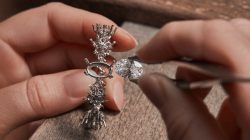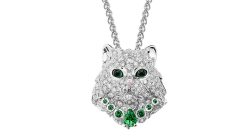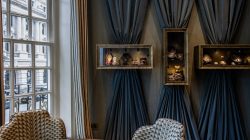“Hideous,” said Willy Chavarria, talking about the fashion business, celebrity entitlement, late-stage capitalism, his current state of mind. It was a Thursday morning at a workroom in the Greenpoint neighborhood of Brooklyn, and the designer was putting last-minute touches on his fall 2024 collection of the men’s wear that, in recent years, has been taken up by a number of people who do not identify as men.
“It’s still men’s wear, honey,” he said.
Hideous are the demands a best-selling pop star made before agreeing to attend Mr. Chavarria’s show on Friday and a lavish dinner party at Jean’s that will follow. Hideous are the industry trade groups that dole out awards to minority designers while withholding the financing necessary to build a sustainable long-term business. Hideous, too, is an aging and increasingly out-of-touch industry elite in America that, in Mr. Chavarria’s words “is clearly failing and flailing.”
It was all insupportably hideous for roughly two minutes. Then the mercurial Mr. Chavarria, 56, experienced a sudden mood shift. “Even if I think I’m over the whole thing,” he said, “I still feel the passion.”
To understand what a relief that is to hear, it helps to know that Mr. Chavarria is among the more abundantly gifted (and, in recent years, decorated) talents in American fashion; that in his shows and his workroom he has long championed a diversity typically deployed at major labels in a largely performative and token manner; and that for his latest collection of super-slick and surprisingly commercial suits and trousers the inspiration was apparently a “a mash-up of Claude Montana ’80s vibes, British tweeds, trousers with snatched waists, lots of Mexican 1930s tailoring and some prairie feeling.”
The cuts are generally leaner than in recent years because, as Mr. Chavarria said, “everybody is now doing my oversize trousers.”
Oh, and the designer made a movie.
Filmed over 10 days in a convent in the Ridgewood neighborhood of Queens in lavish, saturated color, “Safe From Harm” will open the Chavarria show on Friday evening — preceding what will otherwise be a traditional runway presentation of 36 looks, arranged by the superstar stylist Carlos Nazario and worn by live models.
“The broad story is that it represents love and protection and is about anybody who ever felt that pain of being on the outside,” said Mr. Chavarria, whose background as the son of a Mexican immigrant father and a white mother raised among the farm fields of California’s Central Valley is the bedrock of both his identity and his style.
“We’re in a state of discord and sadness now, with what’s going on” in freaking Ukraine and freaking Gaza and the freaking election, the designer said, using saltier language. “We’re all experiencing it, and it didn’t feel right to ignore it.”
Thus the plotless and yet highly melodramatic 11-minute short — cast with a group of superstar mannequins including Paloma Elsesser, Hiandra Martinez, the trans-visibility activist Kai-Isaiah Jamal and the Italian singer-songwriter Mahmood — should serve as a fittingly angsty Fashion Week curtain raiser.
That in itself is a welcome, if sober, kickoff to a parade of fashion collections that, putting aside stunts like KidSuper’s formal-wear gala on Saturday evening or the designer Elena Velez’s controversy-courting teaser about an antebellum theme, seems unlikely to restore New York to its former position of primacy in global fashion.
“It’s treacherous to be part of the machine, to sustain a brand and build a business that makes enough money to feed myself and my team,” Mr. Chavarria said. “There’s a level of insanity, and I do feel like giving up because why am I spending my life trying to prove myself to myself?”
The question was rhetorical and could easily be answered by any determined outsider. What better weapon is there than conviction for taking on a culture intent on pushing you to its margins?
“Unkillable self-belief” is what keeps him going, Mr. Chavarria said. That and “too much coffee.”
Sumber: www.nytimes.com










